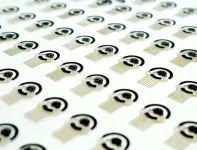(Press-News.org) PHOENIX — Mayo Clinic researchers have identified a targeted therapy that could bring relief to people living with lichen planus, a chronic inflammatory skin condition of the skin, hair, nails, mouth and genitals. They described their findings in a study published in the Journal of Clinical Investigation that described their first-in-human, phase 2 clinical trial.
The researchers identified unique molecular and cellular changes in the skin with lichen planus, particularly an overactive immune response involving specific types of T cells, a crucial immune system component.
The researchers then used baricitinib, a medication that selectively blocks the specific inflammatory pathways of lichen planus, to treat patients in the study.
Cytokines are small proteins that are crucial in controlling the growth and activity of other immune system cells and blood cells. They include interferon-gamma, a critical signal in normal antiviral responses and aberrant in lichen planus, which leads to immune cells attacking normal cells.
Janus kinase (JAK) enzymes play a crucial role in the body's inflammatory response. Baricitinib is an oral JAK 1/2 inhibitor that interrupts the signaling pathway of interferon-gamma by blocking these enzymes. This helps reduce inflammation and suppress the overactive immune response that contributes to these conditions.
The patients with treatment-refractory disease experienced early and sustained clinical response to the treatment, resulting in an 83% improvement in symptom responsiveness within 16 weeks of treatment, a marked improvement over baseline. The therapy also rapidly reduced interferon activity, a key signaling molecule in the disease, as well as reduced the specific, pathogenic T-cells.
"This research is an important step in connecting the dots in understanding — and treating —autoimmune and inflammatory diseases," says senior author Aaron R. Mangold, M.D., a dermatologist and researcher with the Mayo Clinic Comprehensive Cancer Center at Mayo Clinic in Phoenix. "These findings provide a potential new, effective, disease-specific treatment option for lichen planus and therapeutic targets for other inflammatory diseases."
Lichen planus affects 1 to 2% of the general population, altering the quality of life for patients due to intense itching or pain. On the skin, lichen planus often appears as purple, itchy, flat bumps that develop over several weeks. In the mouth and genital mucosa, lichen planus forms lacy white patches, sometimes with painful sores.
Treatment of lichen planus is challenging, and therapeutic options have remained stagnant. To date, researchers have not developed any disease-specific medications for lichen planus. While there is no cure, various treatments can help manage symptoms. However, these treatments can come with common side effects including skin thinning, weakened immune system and increased risk of infection. There is also a need for options for those who don’t respond to treatment. Specific subtypes, such as hypertrophic and mucosal lichen planus, are chronic and may not respond to treatment.
This research provides valuable insights into the pathophysiology of lichen planus and demonstrates the potential of baricitinib as a promising treatment option, says Dr. Mangold, a Mayo Clinic consultant in the Department of Dermatology who studies rare inflammatory conditions and new therapeutics, and conducted an earlier phase 2 Mayo Clinic-led clinical trial to target these cells.
Review the study for a complete list of authors, disclosures and funding.
###
About Mayo Clinic
Mayo Clinic is a nonprofit organization committed to innovation in clinical practice, education and research, and providing compassion, expertise and answers to everyone who needs healing. Visit the Mayo Clinic News Network for additional Mayo Clinic news.
END
Skin disease patients show response to targeted treatment
2025-02-03
ELSE PRESS RELEASES FROM THIS DATE:
Tiny copper ‘flowers’ bloom on artificial leaves for clean fuel production
2025-02-03
Tiny copper ‘nano-flowers’ have been attached to an artificial leaf to produce clean fuels and chemicals that are the backbone of modern energy and manufacturing.
The researchers, from the University of Cambridge and the University of California, Berkeley, developed a practical way to make hydrocarbons – molecules made of carbon and hydrogen – powered solely by the sun.
The device they developed combines a light absorbing ‘leaf’ made from a high-efficiency solar cell material called perovskite, with a copper nanoflower catalyst, to convert carbon dioxide into useful molecules. Unlike most metal catalysts, which can only convert CO₂ into single-carbon ...
Cracks in Greenland Ice Sheet grow more rapidly in response to climate change
2025-02-03
Embargoed until 10am GMT UK time (5am US Eastern Time) on Monday 03 February 2025 (Nature Geoscience embargo)
-With pictures-
The Greenland Ice Sheet is cracking open more rapidly as it responds to climate change.
The warning comes in a new large-scale study of crevasses on the world’s second largest body of ice.
Using 3-D surface maps, scientists led by Durham University, UK, found crevasses had significantly increased in size and depth at the fast-flowing edges of the ice sheet over the ...
Computer model helps identify cancer-fighting immune cells key to immunotherapy
2025-02-03
*EMBARGOED FOR RELEASE UNTIL MONDAY, FEB. 3, AT 5 A.M. ET*
Researchers at the Johns Hopkins Kimmel Cancer Center and Bloomberg~Kimmel Institute for Cancer Immunotherapy have developed a computer model to help scientists identify tumor-fighting immune cells in patients with lung cancer treated with immune checkpoint inhibitors.
In their study published Feb. 3 in Nature Communications, the team, including first author Zhen Zeng, Ph.D., a bioinformatics research associate at the Kimmel Cancer Center, demonstrated that their three-gene “MANAscore” computer model can identify ...
Keeper or corner?
2025-02-03
Our brain is remarkably flexible in producing different reactions to supposedly comparable situations. The same sensory information can lead to different decisions depending on the behavioral context. One example of this is a penalty kick in soccer: a player can either choose the empty corner of the goal as the target or aim directly at the goalkeeper in the hope that he will jump aside. Both decisions are based on the same perception of the goalkeeper's position, but lead to completely different actions. Neuroscientists at the German Primate Center (DPZ) - Leibniz Institute for Primate Research in Göttingen have investigated how the brain implements this ...
Printable molecule-selective nanoparticles enable mass production of wearable biosensors
2025-02-03
The future of medicine may very well lie in the personalization of health care—knowing exactly what an individual needs and then delivering just the right mix of nutrients, metabolites, and medications, if necessary, to stabilize and improve their condition. To make this possible, physicians first need a way to continuously measure and monitor certain biomarkers of health.
To that end, a team of Caltech engineers has developed a technique for inkjet printing arrays of special nanoparticles that enables the mass production of long-lasting wearable sweat sensors. These sensors could be used to monitor a variety of biomarkers, ...
Mapping the yerba mate genome reveals surprising facts about the evolution of caffeine
2025-02-03
Yerba mate, along with tea and coffee, is one of the world’s most popular caffeinated beverages. Widely consumed in South America, this remarkable plant is rich in diverse, bioactive compounds that contribute many health benefits.
An international group of researchers has mapped the yerba mate genome, providing insights into the biosynthesis of caffeine in yerba mate. This new information provides opportunities for creating plant varieties with new characteristics.
The work, led by the ...
Electricity prices across Europe to stabilise if 2030 targets for renewable energy are met, study suggests
2025-02-03
Hitting the current national 2030 quotas for solar and wind energy could reduce the volatility of electricity markets by an average of 20% across 29 European countries, according to a new study from the University of Cambridge.
The intensity of spikes in power prices are predicted to fall in every country by the end of the decade if commitments to green energy are met, as natural gas dependency is cut.
The UK and Ireland would be the biggest beneficiaries, with 44% and 43% reductions in the severity of electricity price spikes by 2030, compared with last year.
Germany could experience a 31% decline in electricity price ...
Improved treatment timing reduces honey bee losses to Varroa mites
2025-02-03
Honey bee mortality can be significantly reduced by ensuring that treatments for the parasitic Varroa mite occur within specific timeframes, a new study reveals.
The mites—belonging to the species Varroa destructor—feed on the larvae of bees and can destroy colonies if not treated at key points to reduce or remove infestations.
But researchers have found that more than a third of beekeepers surveyed in England and Wales deviate from recommended treatment guidelines, including application windows.
Crucially, they found that beekeepers who mistimed Varroa mite treatments experienced exacerbated colony losses, with the effect occurring ...
CAR-T cells can arm bystander T cells with CAR molecules via trogocytosis
2025-02-03
Engineered immune cells called CAR-T cells are used in the treatment of cancer. Researchers from Uppsala University have now discovered that CAR molecules can be transferred from the CAR-T cells to other T cells in the tumour microenvironment. The researchers also pinpoint how this transfer is regulated, which may be used to improve the efficacy of CAR-T cell therapy. The study has been published in the journal Science Immunology.
Immune cells have a capacity to exchange cell surface molecules between one another. This exchange is called trogocytosis and may potentially impact the immune response since it allows different proteins to be transferred between cells.
Chimeric antigen ...
Can ocean-floor mining oversights help us regulate space debris and mining on the Moon?
2025-02-03
by Nishith Mishra, Martina Elia Vitoloni, and Dr Joseph Pelton
Mining ocean resources needed for electric cars and other devices is currently a hot issue of dispute. Final resolution of how or whether the seabed should be expl18oited is pending. Outcomes in this contentious area could create precedents that could impact decisions about mining the moon.
These precedents might shape the how and why of mining the Moon and shape the future and the sustainability of space activities of human beings. But this is only one possible precedent that could reshape the future of space.
Pending international discussions on space traffic management, space debris removal, and limiting ...





